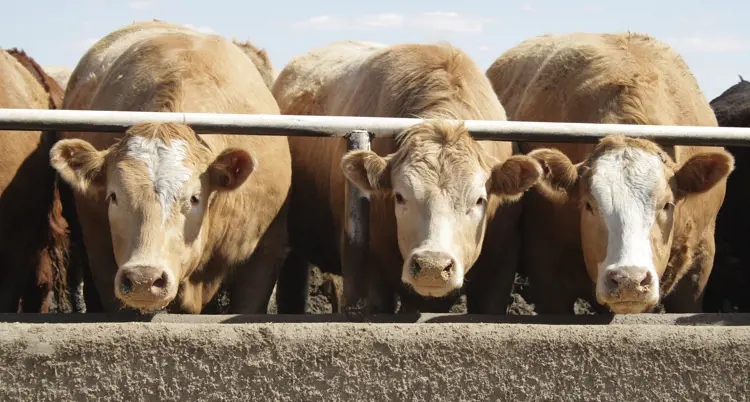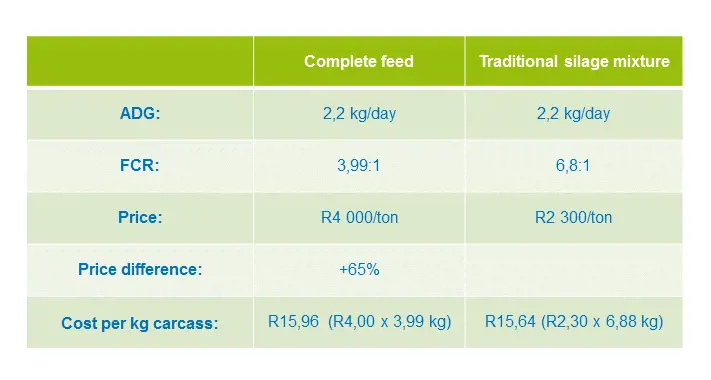Complete feed in cattle feedlots
Hominy chop, which is regularly used as inclusion resource in cattle feedlots varies greatly as far as price, quality and availability is concerned. Maize is very scarce and expensive and because of the present drought there is a decrease in availability of maize silage for inclusion in feedlot rations. But there is a proverb that says: necessity is the mother of invention!

De Heus with a few of its clients are busy testing the effect of the use of complete feeds (pellets) in cattle feedlots in order to test the viability of this feed as well as to investigate it as an alternative for traditional grain mixtures and practices. Most of these tests have not yet been concluded but there are already a few interesting tendencies which deserve to be noted.
Average daily gain (ADG)
ADG in both tests was on average above 2,2 kg/day over the first 40 days. After that growth decreased to just below 2 kg/day. This can be considered as good growth rates, but it did not necessarily differ from growth on grain- or silage based rations. There is, however, a difference in terms of feed conversion ratio.
Feed conversion ratio (FCR)
On complete feed the animals performed as follows:
Feedlot 1: FCR of 3,99:1 against the control group (on a silage based ration) with an FCR of 6,8:1. This is an essential difference that implies that although it is more expensive a considerable amount less complete feed are required than the traditional ration for the same amount of growth. At the second feedlot there was not a control group, but a similar FCR of 4.1:1 was obtained on the complete feed.
Margin over feed cost
Feed conversion ratio and dressing % are probably the two main drivers when it comes to determining the profitability of a feedlot. To determine margin over feed cost we have to know what the feed consumption per animal per day is which also determines the FCR. If we look at the above-mentioned comparisons we see the following:In spite of a price difference of 65 % between the complete feed and a silage mixture the, cost to produce 1 kg carcass is very comparable between the two rations. Factors that have not been considered are the ease of handling complete feed as compared to the cost of handling, mixing, labour and time of traditional grain/silage rations. The difference lies in the amount of feed that is required to add 1kg carcass (FCR).
Although we do not have the full answer yet, and the present price of the day can change the outcome (for better or for worse) we have however seen that the use of complete feed in a cattle feedlot is not so far-fetched. At times of drought, a scarcity of resources, expensive resources and labour it is possibly a comfortable solution for many producers.

